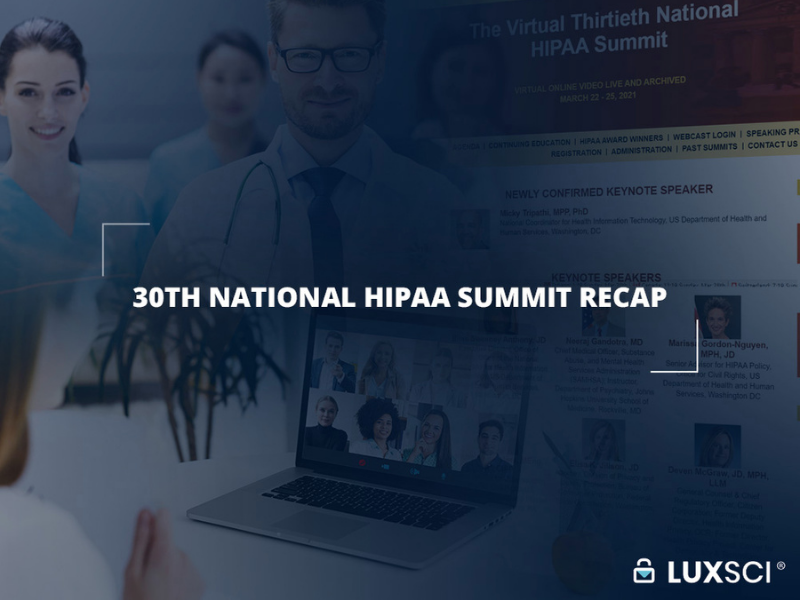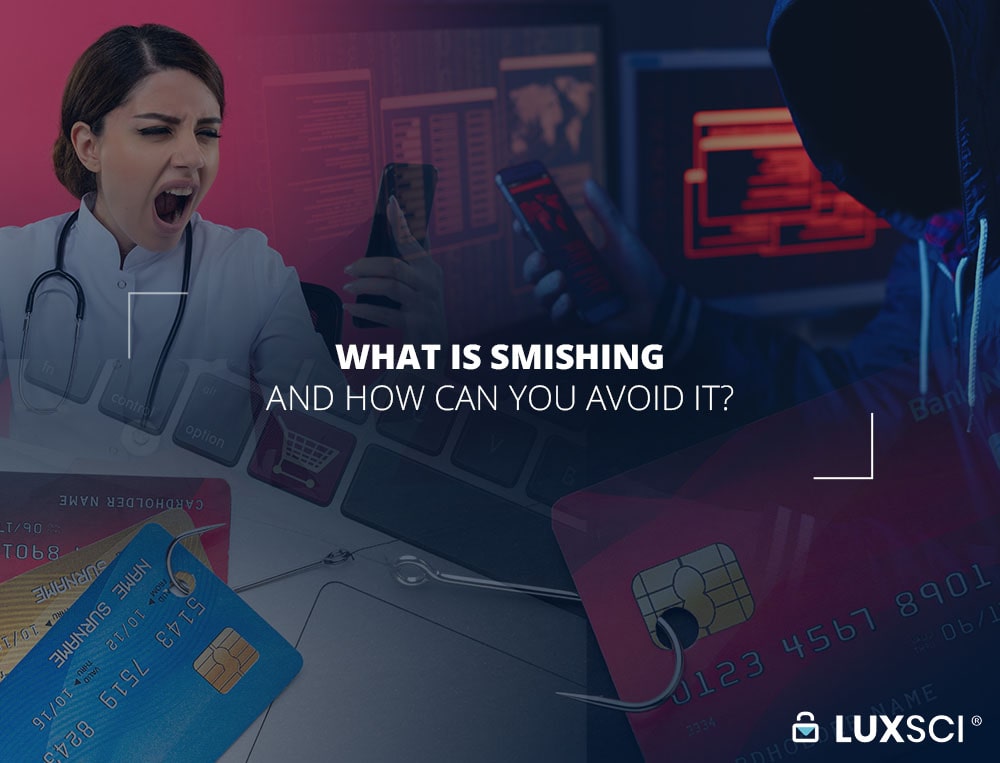5 Ways to Prevent Human Impacts on Your Cybersecurity Program
Tuesday, October 12th, 2021There are multiple ways that humans impact cybersecurity and can put data at risk. From being tricked by phishing emails to choosing easily guessed passwords, insider fraud and mistakenly classifying the security level of emails and other content, the actions of your employees can make your data vulnerable.
While the impact of human errors can’t be eliminated entirely, there are steps that can be taken to minimize the effects humans can have on your cybersecurity. Five of these steps are detailed below.
1. Adopt an “Opt-out” approach to encryption
At LuxSci, our philosophy is to limit risk by taking basic security choices out of employee hands. Instead of relying on employees to encrypt emails with sensitive contents, we automatically encrypt every message by default. This makes it more difficult for an employee to carelessly send out sensitive emails without the proper safeguards.
Conversely, when taking an opt-in approach to cybersecurity, employees are responsible for remembering to encrypt each email before sending. Anytime an employee forgets to take this step, it represents a potential security breach with all the liability that entails. Adopting an opt-out approach to encryption reduces this risk significantly. While many companies use opt-in processes because of their convenience, they introduce a high degree of risk. LuxSci’s SecureLine encryption technology enables a new generation of email encryption that features both flexibility and security.
2. Implement strict email filtering and network firewalls
Are you familiar with the aphorism “an ounce of prevention is worth a pound of cure”? By taking steps to prevent malicious threats from reaching your systems and networks, your employees will not have to spend their time trying to figure out what is a threat.
Email filtering
Phishing is one of the greatest threats to cybersecurity. Rather than relying strictly on human judgement with regard to which emails to open, using a sender policy system that filters or flags suspicious incoming emails can appreciably improve cybersecurity. Don’t count on your busy employees to know when an email is suspicious. Instead, use email filtering to keep those emails from even entering their inboxes.
Network firewalls
Firewalls help prevent attackers from gaining easy access to your network. They prevent suspicious connections or messages from connecting to the network or reaching their intended destination. By serving as a first line of defense, a firewall plays a major part in shielding your network from cyberattacks. By preventing external threats from accessing your applications, you don’t need to count on your employees to recognize when something isn’t right.
3. Prevent human impacts on cybersecurity by training staff
Almost every modern workplace relies on internet-connected devices to get work done. However, just training staff to use your technology effectively is not enough. With cyberattacks growing in frequency, keeping your staff aware of the latest cybersecurity threats is essential to protect your business. With data breaches, denial-of-service (DoS), and ransomware attacks accounting for tremendous financial losses, failing to prepare your staff for the danger these attacks pose to your IT operations can be costly.
Your employees can prevent security breaches if they are properly trained in the latest cybersecurity best practices. Some complex security breaches can evade even the best automated security measures. If your staff knows what to look for, they can play a crucial role in augmenting your existing security measures.
In addition, hackers often target employees as their first access point for gaining entry to a network. As a result, restricting cybersecurity training to just the IT department can leave your employees vulnerable to social engineering, phishing emails, and other exploits used by hackers to dupe them.
A cybersecurity training program can help reduce risks by familiarizing employees with the tricks used by hackers to gain access to their accounts. As part of the training program, it’s important to test employees on core concepts to ensure the message is retained.
4. Enforce strong password and access control policies
To reduce the risk of security breaches, a robust password protection program is necessary. One of the key elements is enforcing password complexity. Simple passwords are vulnerable to brute force hacking, enabling hackers to easily access employee accounts.
Requiring staff to use unique, complex passwords makes it much harder for hackers to gain access to an account. A complex password can include multiple types of characters (numbers, letters, capitalization, special characters) and minimum character lengths. Learn more about creating secure passwords in our blog archives.
Multi-factor authentication (MFA) is another key element of a robust security policy. By requiring more than a single action to access an account, you can drastically cut down on security breaches due to lost or stolen passwords. Given that compromised passwords are a significant cause of security breaches, using MFA is a powerful tool for bolstering network security.
In addition, setting up time-based access controls for your sensitive systems can prevent bad actors from gaining unauthorized access. For example, if you have an employee who works a 9am-5pm shift, you can prevent her from accessing the system from 6pm-8am. That way if a bad actor did get her credentials, they would be unable to login when she was offline. This could prevent someone from taking over your systems overnight.
5. Adopt the Zero Trust security stance
What is Zero Trust Architecture? Essentially, it is a policy for guarding against cyberattacks by assuming that every aspect of a network is subject to attack. This includes potential insider threats from employees or attackers who have infiltrated your network. This contrasts with other security approaches that assume that traffic within a network’s security perimeter can automatically be trusted. Instead, Zero Trust Architecture minimizes the security perimeter as much as possible to reduce the chance of a security breach and evaluates the credentials and actions of users at all levels of access to identify any actors inside the network who may pose a threat.
By providing a more granular level of threat detection and limiting access within the network, a Zero Trust security approach is more rigorous than existing security models focused primarily on perimeter security.
ZTA improves security without imposing unduly burdensome requirements. It gives users access to just the minimum level of data and services needed to fulfill their role. This can help stop insider threats from employees. If a lower-level employee with little access to sensitive data has their credentials compromised, it is less threatening to the organization’s data security. The attacker will not be able to penetrate other parts of the network without additional identity verification.
Limiting human impacts on your cybersecurity to decrease risk
Humans can amplify cybersecurity risks in many ways. Between careless mistakes and intentional sabotage, there are a number of things that employees can do to expose your company to cybersecurity risks. The steps listed above comprise a comprehensive set of measures you can take to minimize negative human impacts on cybersecurity. In conjunction with a robust security solution, these measures can significantly enhance your cybersecurity defenses.
Secure your organization by contacting us to find out how to get onboard with LuxSci.








